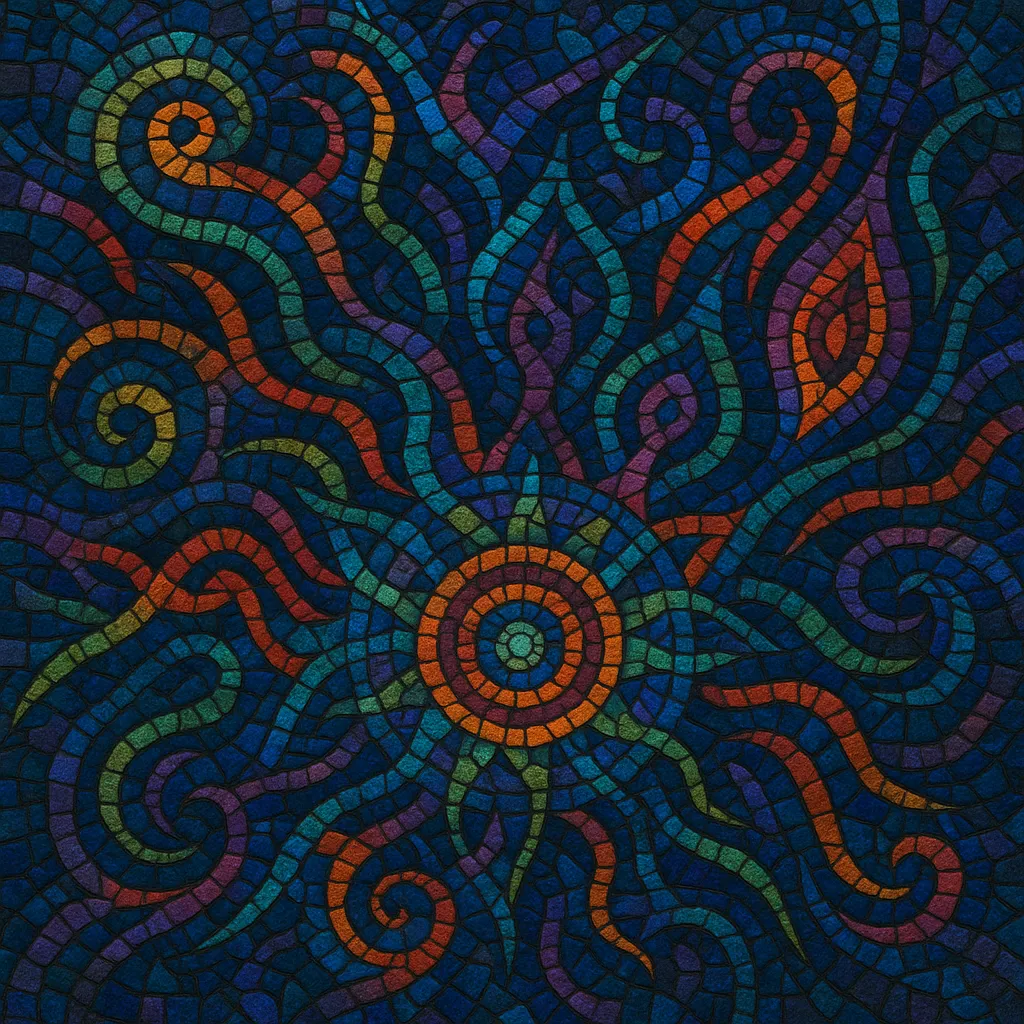Psytrance (psychedelic trance) is a high-energy branch of trance music that emphasizes hypnotic repetition, richly modulated synth textures, and immersive sound design.
Typically ranging from 138–150 BPM (with substyles slower or faster), it features a straight four-on-the-floor kick, a tight, rolling 1/16th-note bassline, and intricately layered FX—zaps, squelches, formant sweeps, and granular stutters—arranged to create a mind-bending, psychedelic journey.
Tracks are commonly 6–9 minutes long, evolving through long-form tension and release. Harmony is sparse and modal (often minor, Phrygian, or Phrygian dominant), while rhythmic micro-variations, filter automation, and spatial motion (pans, dopplers, psychoacoustic tricks) carry the narrative.
Psytrance grew out of the Goa scene in India, where outdoor parties fused electronic dance music with the countercultural, psychedelic ethos. Goa Trance (late 1980s–early 1990s) provided the template: spiraling arpeggios, acid timbres, and long, ritual-like DJ sets. As DJs and producers from Europe and Israel brought new studio tools and club sensibilities, a sleeker, punchier sound emerged—psychedelic trance (psytrance).
By the mid-1990s, psytrance distinguished itself from Goa Trance with tighter kick-and-bass alignment, more precise sound design, and cleaner arrangements geared for large PAs. Israel, the UK, and Germany became key hubs, with labels and festivals helping codify the style and distribute it globally.
The 2000s saw diversification: Full-on emphasized euphoric leads and big breakdowns; Progressive Psytrance lowered the tempo and embraced minimalism; Dark Psy and Forest Psy pushed tempos and timbral density into nocturnal territory; Suomisaundi cultivated free-spirited, quirky experimentation; Hi-Tech sped up and hyper-detailed the palette. Festivals across Europe, Latin America, and Australia anchored a thriving circuit culture.
Collaborations with big-room and EDM artists, along with high-production festival stages, brought psytrance elements to wider audiences. Modern production tools (advanced wavetable/FMsynths, modular rigs) refined the genre’s hallmark: surgical kick-bass synergy, complex modulation, and spatial FX. Today, psytrance remains a global, festival-centered culture with a spectrum of substyles and a strong DIY label ecosystem.


